Follow along with the video below to see how to install our site as a web app on your home screen.
Note: This feature may not be available in some browsers.
You should upgrade or use an alternative browser.
Tail & Vent
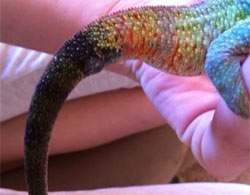
If the tail is a darker color than normal in one area but still curls and uncurls normally it may be a bruise causing the discoloration. If the tail is stiff and can’t curl it means the tissue is necrotic (dead). In general this area will dry up and fall off over time but if it spreads up the tail then it needs to be treated with antibiotics and possibly amputated to prevent the spread of infection to the rest of the body. Discoloration of large parts of the body, including the tail, could indicate a potential neurological problem like a spinal fracture or pinched nerve due to organ displacement.
Diarrhea is an intestinal disorder characterized by abnormal frequency or fluidity of fecal evacuations. A chameleon that has runny poops could indicate they have internal parasites, a bacterial overgrowth or improper temperatures causing poor digestion. A fresh fecal sample should be collected and taken to a reptile vet immediately for analysis. If you are unable to drop the sample off right away it can be stored in a sealed container and left in the refrigerator for up to 24 hours. After this point the sample becomes too unstable for proper analysis and another one should be obtained. Wash your hands well after dealing with any reptile feces.
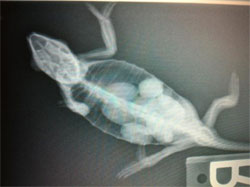
Dystocia is the inability of a female chameleon to lay her eggs from medical, nutritional or environmental factors. This is a life threatening condition. Females who cannot lay eggs become visibly stressed, weak and appear to be straining. Prolapse of the cloaca may occur. Medical attention should be given within 48 hours of these signs and treatments can include medications to help pass the eggs to a spay surgery to remove the eggs and oviducts.
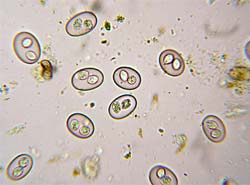
Intestinal parasites are microscopic worms and protozoa that live primarily in the intestines of a chameleon. These are very common in wild caught specimens but can be found in captive bred animals as well. Most kinds of internal parasites are obtained by ingesting an infected feeder or coming in contact with infected feces from another animal. Signs of an overgrowth in gut parasites include diarrhea, foul smelling feces, weight loss, lethargy, lack of appetite and vomiting. Most parasites are not visible to the naked eye so a fresh fecal sample should be brought to a reptile veterinarian for analysis and a dewormer prescribed based on the results. There are many kinds of deworming medications and not one that will work on all parasites. A fecal sample is analyzed to find the ova (eggs) of the parasites, and worms are not shedding eggs at all times so one negative fecal sample does not necessarily mean there are no parasites present.

Healthy and hydrated chameleon feces are composed of two parts; a fecal pellet (poop) that is dark brown and evenly formed and a white part that is a solid urate (urine, pee). A yellow or orange color to the urate indicates that the animal is dehydrated and increased misting sessions, shower treatments and access to a dripper will help to quickly reverse the problem. If left unchecked, chronic dehydration can lead to serious health problems like kidney failure.
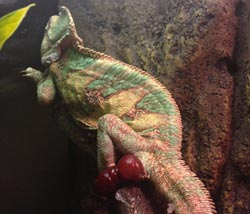
Prolapse is the eversion (falling or slipping out of place) of an internal organ outside of the body. A prolapse of any sort is a medical emergency. While waiting for medical attention, place the chameleon on warm damp towels in a small container or tote. This will prevent the exposed organ from rupturing against cage furnishings and it will keep the area moist. Soaking in sugar water (a heavy concentration of sugar will act to draw out the fluids engorging the everted tissue and this may reduce it enough to be inverted by the chameleon) or applying regular KY Jelly to the affected area will keep the tissue alive. If the tissue dies or is ruptured it is very susceptible to infection that can spread to the rest of the body. In most cases the exposed tissue is replaced internally and surgically fixed with small stitches to prevent future prolapse. In the case of a hemipenal prolapse the organ may be amputated. Please bear in mind that male chameleons will sometimes expose their hemipenes during defecation for a few seconds and revert them back into the body; this is not an emergency.
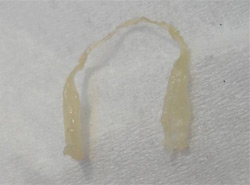
Sexually mature male chameleons form an exudate of sperm in the hemipenes. This is normally expelled during defecation – sometimes the male will evert one or both of his hemipenes to free the matter – and looks like white rubbery sticky string. This is normal and needs no intervention. In cases where these aren't expelled normally sperm or seminal plugs then occur and these look like a small lump of dried feces at the corner(s) of the vent. If these are not removed they continue to build up and may cause some discomfort. Soaking the chameleon in a warm bath will help soften the material and may help the chameleon to push them out on their own. Hardened or enlarged plugs should be seen by a veterinarian for removal as damage to sensitive tissue can occur.
